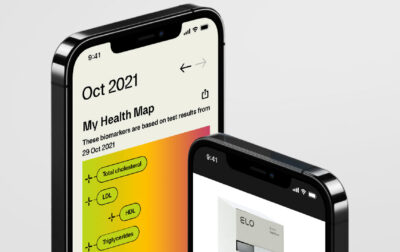MOBILE APP DEVELOPMENT: REFACTORING VS REWRITING FROM SCRATCH
Intro
The dilemma of refactoring or rewriting the solution is common with business owners, because the decision directly influences the cost, timelines, risks, and future software scalability, affecting how the company will innovate, compete, and deliver value to clients.
By reading this blog post, you will understand how to make the right choice, taking into account the particularities of your business.
1.
UNDERSTANDING REFACTORING
Solution refactoring represents the process of enhancing the design and structure of an existing code without the need to change its behavior and core functionality. The main goal of refactoring is to refine code readability, efficiency, and maintainability — to further enable smoother updates, minimize technical debt, and refine overall solution quality.
KEY BENEFITS
- Cost-efficiency. As refactoring doesn’t presuppose functionality changes, you will spend less upfront time and allocate fewer resources. And this means slashed initial development costs as opposed to developing a solution from the ground up.
- Quicker value delivery. Incremental code enhancements will allow you to accelerate time to market for your software as compared to longer timelines of a full app rewrite. In turn, you can respond faster to changing user needs and market demands, outperforming competitors.
- Minimized disruption. Refactoring preserves the existing functionality, that’s why the risk of facing new bugs, vulnerabilities, unforeseen issues, and as a result delays and operation downtime is minimized.
2.
UNDERSTANDING REWRITING
Rewriting presupposes rebuilding the solution from the ground up to solve some fundamental issues (for example, redefine performance and security), or adopt new technologies. Although complete code rewriting usually entails higher cost, extended timelines, and downtime risks, its implementation gives long-term value.
KEY BENEFITS
- Complete flexibility. By redesigning the system architecture from scratch, you can make it more scalable and modular. And this means easier future modifications to align with best practices, industry standards, as well as evolving user and market needs.
- Fundamental flows elimination. If your software experiences systematic issues like poor performance or insufficient security, a rewrite can comprehensively address them.
- Alignment with modern tech. Existing code rewriting enables the adoption of new programming languages, frameworks, and tools — for better compatibility with third-party systems and minimized technical debt.

WHEN TO CHOOSE CODE REFACTORING VS REWRITING
When deciding between two options, consider factors such as your current and future project goals, preferable timelines, costs, and possible risks. Also, thoroughly analyze the state of your current solution: code readability, quality, and maintainability. Here’s a short breakdown with examples to help make up your mind.
WHEN TO CHOOSE REFACTORING
There’s no need for a complete rewrite in the following cases:
- Legacy code with technical debt but sound architecture. If your code is generally sound, and you need just minor improvements in its readability and maintainability, refactoring is a great choice. For example, you have a banking app built many years ago, its architecture is valid, but the codebase has bugs, duplicated code, and outdated algorithms. In this case, refactoring — breaking functions in smaller units, improving naming, and modularizing components — helps incrementally enhance code quality, avoiding security risks and system overhaul.
- UI refactoring. In cases when your mobile app’s key features work well, but the UI has deprecated components or inconsistent design patterns, refactoring is a good option. You can gradually refactor the UI — by updating existing components to current standards, separating styling, and improving the architecture.
- Minor performance issues. If your mobile app consumes excessive resources while its core logic is correct, you can refactor performance-critical parts, for example, refine algorithms, minimize unnecessary network calls, improve UI rendering, update dependencies, and optimize data handling.
- Upgrading a monolithic mobile solution for better scalability and easier deployment is also possible without complete rewrites. Namely, when dealing with a monolithic app you can modularize the code, extracting tightly coupled features into separate independent modules or libraries.
WHEN TO CHOOSE REWRITING
Complete software rewriting is preferable in the following scenarios:
- Fundamental architectural issues. When your solution’s architecture is flawed, obsolete, or incompatible with new requirements, rewriting is a way out. For example, eBay mobile app’s earlier versions struggled to handle increased traffic. To address that, the company moved from monolithic codebases to more modular architectures.
- Severe security challenges. If your solution that contains sensitive data (personal health information, financial data, etc.) was developed without proper security considerations, vulnerabilities might accumulate, and simple refactoring won’t be enough. In this case, rebuild the solution with security-by-design from the ground up to comply with the stringent regulations such as PCI DSS, HIPA, or GDPR.
- Adoption of new technologies. If your mobile app was built with outdated frameworks, APIs, or libraries, you’ll need rewriting to implement the newest techs, tools, and best practices. And this means easier, faster functionality updates, and as a result the app’s growth. For example, Facebook rewrote its Android app by leveraging React Native capabilities to speed up development, ensure cross-platform consistency, and reinforce app stability.
- Serious performance issues. For example, in cases when your e-commerce solution experiences slow checkouts, forcing customers to abandon their carts, you might need to redesign the entire workflow by optimizing database interactions, adding faster payment gateways, or simplifying the order processing. Or, if viewers of your steaming service deal with buffering and lag during high-traffic periods, you might need an overhaul of its architecture, incorporating CDN (Content Delivery Network) strategies or cloud computing. For instance, Spotify mobile app teams up with multiple CDN providers (Akamai, Cloudflare, Google Cloud CDN) to cache music content closer to listeners, ensuring smooth playback worldwide.
SUMMARY TABLE
ASPECT | REFACTORING | REWRITING |
Budget | Low or moderate cost | More expensive |
Timelines | Can be implemented quickly | Takes more time |
Resources | CanCan be done with an in-house team be implemented quickly | Requires experienced developers, might need an outsourced team |
Scope of changes | Minor, moderate improvements, incremental enhancements | Big structural changes, system overhaul |
Risks | Lower risks | Downtime and disruption are possible |
Impact on business | Quick wins | Long-term benefits |
POTENTIAL CHALLENGES AND MITIGATION STRATEGIES
No matter which part of the “software rewrite vs refactor” you choose, you might face certain challenges and unforeseen issues in both approaches:
- Introduction of new bugs. Even if you’re changing the existing code, unintentional errors and regressions might occur. So prepare a comprehensive testing strategy to avoid bugs and keep the functionality intact.
- Loss of functionality. During rewriting or even major refactoring, there’s a threat of misimplementing particular features and facing the loss of critical functionality. To avoid this, try to break down rewrites into more manageable components, maintain backward compatibility, implement version control systems, conduct regular code reviews, while documenting all the changes.
- Compatibility issues. When changing core functionality, keep in mind that integrations with other systems and legacy dependencies might be impacted. To address possible compatibility issues in this regard, perform overarching testing (including unit tests, integration tests, and end-to-end tests), thoroughly document all dependencies and use relevant tools to lock versions, and perform compatibility checks.
- Downtime. To make sure significant code changes won’t disrupt your ongoing business operations, set up staging environments where you can safely test the refactored code separately from production. Also, have rollback procedures in place and if possible, plan major code changes during the period of low user activity.
- Increased timelines and costs. Underestimated complexity, insufficient planning, lack of experience might lead to incomplete refactoring / rewriting efforts and in turn unstable code. As a result, project delays and budget overruns are possible. That’s why create a comprehensive strategy that would cover these key aspects, including possible risks.
Conclusion
Software changes — whether it’s minor refactoring or complete rewriting — give tangible technical and business benefits, but at the same time presuppose certain challenges. So when choosing between the two options, consider factors such as immediate and long-term goals, project scope, resources involved, timelines, and financial expenditures.
Experts in software developmeеnt, Touchlane is ready to help you in both cases. Whether you want to scale your solution and expand your business to new territories, introduce new features for more rapid innovation, refine your existing code for better look and feel, or redefine security for enhanced user experience — we’ve got your back.
RELATED SERVICES
CUSTOM MOBILE APP DEVELOPMENT
If you have an idea for a product along with put-together business requirements, and you want your time-to-market to be as short as possible without cutting any corners on quality, Touchlane can become your all-in-one technology partner, putting together a cross-functional team and carrying a project all the way to its successful launch into the digital reality.
If you have an idea for a product along with put-together business requirements, and you want your time-to-market to be as short as possible without cutting any corners on quality, Touchlane can become your all-in-one technology partner, putting together a cross-functional team and carrying a project all the way to its successful launch into the digital reality.
We Cover
- Design
- Development
- Testing
- Maintenance











